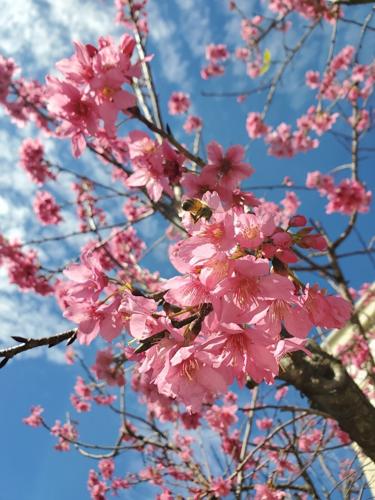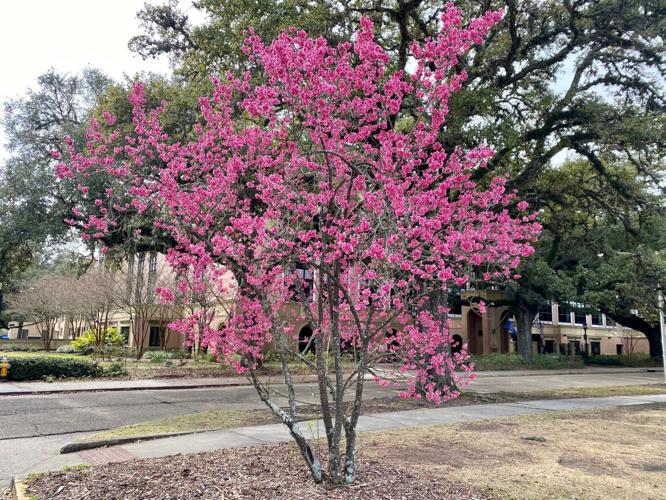Flowering cherry trees are putting on a gorgeous show in south Louisiana right now.
The vibrant, dark pink flowers emerge on bare branches just before the leaves emerge to create a stunning display. These deciduous trees grow up to 20 feet high and are equally as wide.
With an upright form and arching branches, perfect for lining a road or driveway, flowering cherry trees make great accent trees in the landscape.
The Taiwan flowering cherry, the Kwanzan flowering cherry tree and the hybrid Okame flowering cherry tree, all native to southern China, are popular varieties to consider. They thrive in a full- to part-sun location, with well-drained soil.
Japanese flowering cherry trees also do well in Louisiana, planted in well-drained, acidic soil; compacted clay soils can become too wet or too dry. You can improve the soil by amending with organic matter such as compost. If you need to lower the pH use aluminum sulfate or elemental sulfur. Be sure to follow the manufacturer’s label for directions and application amounts.
For the best blooms, plant the trees in an area that gets lots of sun with light shade in the afternoon to help reduce water stress and leaf scalding. Be sure to irrigate during extended droughts.
Flowering cherries require chilling hours — time spent at 32 to 40 degrees — to develop flowers and fruit.
The varieties recommended above have a low chill requirement. The Taiwan cherry is the most heat-tolerant of the many species and will grow fairly well here.
Flowers make way for small red fruits that attract songbirds and other wildlife. The peeling bark, grayish-brown with light gray horizontal lenticels, is another aesthetic feature.
Flowering cherry trees do have a few drawbacks. First, they typically live only 10 to 15 years. However, that is plenty of time to enjoy the blooms of these gorgeous trees. If you are lucky, dropped fruit will provide some new seedlings.
The trees are susceptible to a few diseases, such as leaf spot, leaf curl, powdery mildew and fireblight. Some insect pests include borers, aphids, scale, tent caterpillars and Japanese beetles.
For the most beautiful blooms, fertilize once a year with a low-nitrogen fertilizer in the early spring. Pruning also is recommended in the early years of the tree’s life.
Examine the tree each year, trimming as needed to keep it in the shape and size you desire. Remove suckers or shoots coming off the bottom of the tree in addition to branches from the center of the tree. Be sure to remove dead or diseased branches.
Unpruned trees may become overgrown and weak. It is best to prune immediately after the tree flowers in the early spring to help promote new growth and to improve next year’s flowering display.
According to the National Park Service, cherry trees were planted in Washington, D.C., in 1912. Thousands of trees, including a dozen species, were gifted to the United States from Japan.
The first Cherry Blossom Festival in the Tidal Basin in our nation’s capital was held in 1935. This year, it will be held from March 20 to April 11.




